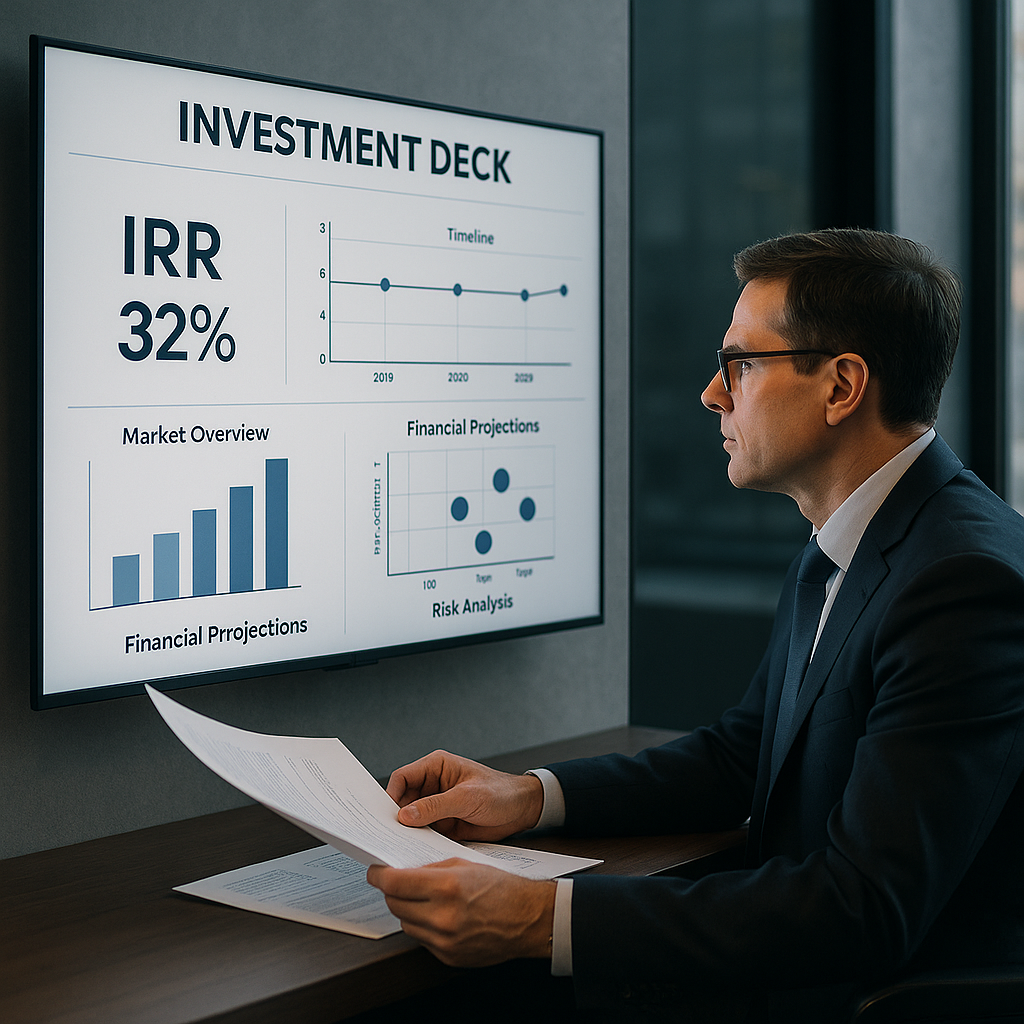The IRR Obsession: Why It's Not Enough
IRR (Internal Rate of Return) is often treated as the headline number in any investment opportunity. It's what catches attention in a pitch deck and often what investors ask about first. But IRR, while useful, is only a projection. It’s built on a foundation of assumptions—and those assumptions matter more than the number itself.
Think of IRR like the cover of a book. It tells you something, but not nearly enough. If you're investing in a real estate deal, a private credit vehicle, or a mixed-use development, what you really want is insight into the full narrative behind the number.
What the IRR Doesn’t Tell You
Here’s what IRR won’t tell you:
- How realistic the business plan is
- What happens if the market underperforms
- How fees and promote structures affect your net return
- How long your capital is actually tied up
- What assumptions went into the exit strategy
You need to peel back the layers. If the IRR is 18%, is that based on a smooth exit in year five? What if the market stalls in year four? Who takes the hit first—you or the sponsor?
The Sponsor: Who’s Really Running the Show?
A good deck doesn’t just pitch the project—it explains who is executing it. Look closely at the sponsor’s background:
- Track record: Not just in good markets, but during downturns
- Skin in the game: Are they investing their own capital?
- Transparency: Are risks addressed openly, or glossed over?
- Alignment of interests: How are they incentivized to protect your capital?
At Infinity⁹, we often say: There are no bad markets, just bad strategies. The right operator can navigate volatility. The wrong one can sink a deal in perfect conditions.
Market Assumptions: Grounded or Guesswork?
A projection is only as strong as the assumptions behind it. Review the deck’s assumptions with a skeptical eye:
- Rent growth and occupancy: Are they assuming double-digit increases in a flat market?
- Exit cap rates: Are they assuming cap rate compression that might not be realistic?
- Construction timelines and costs: Are they building in enough contingency?
If the model needs everything to go right for it to work, it’s not a model—it’s a wish.
Deal Structure: Who Gets Paid, When, and How?
Always read the fine print of the deal structure:
- Preferred return: Is there a hurdle before the sponsor shares in the profits?
- Promote structure: How is profit split after certain benchmarks are hit?
- Fees: Are asset management or acquisition fees excessive?
These elements can dramatically change your actual return—even if the projected IRR looks strong.
Time Horizon and Liquidity: Can You Wait That Long?
An 18% IRR might sound great—until you realize your capital is locked up for 10 years with no interim cash flow. Make sure you understand:
- Hold period
- Distribution schedule
- Liquidity options (if any)
If your needs change, can your capital adapt—or is it stuck?
Exit Risk: The Least Talked-About Variable
Every investment deck ends with a clean exit slide—but exits rarely go according to plan. Ask:
- Is the exit based on refinancing, a sale, or IPO?
- What happens if cap rates rise?
- Is there a backup plan?
Private investments often shine because they don’t depend on market timing like public assets. But that only holds if the exit strategy is realistic.
The Infinity⁹ Lens: How We Evaluate Deals
At Infinity⁹, we focus on private real estate and credit opportunities that offer:
- Institutional-quality underwriting
- Deep sponsor alignment
- Risk-adjusted strategies that hold up under pressure
We don't chase high IRRs. We chase resilient returns based on real fundamentals. If a deal can’t make sense with a conservative exit and real-world stress tests, it doesn’t belong in our Capital Framework.
A Better Way to Read a Deck
Next time you open an investment deck, don’t flip straight to the IRR. Ask better questions:
- Who’s running this deal, and what’s their track record?
- What are the core assumptions, and are they realistic?
- How am I getting paid, and when?
- What happens if things don’t go according to plan?
Your money doesn’t need a visa. But it does need a strategy.







